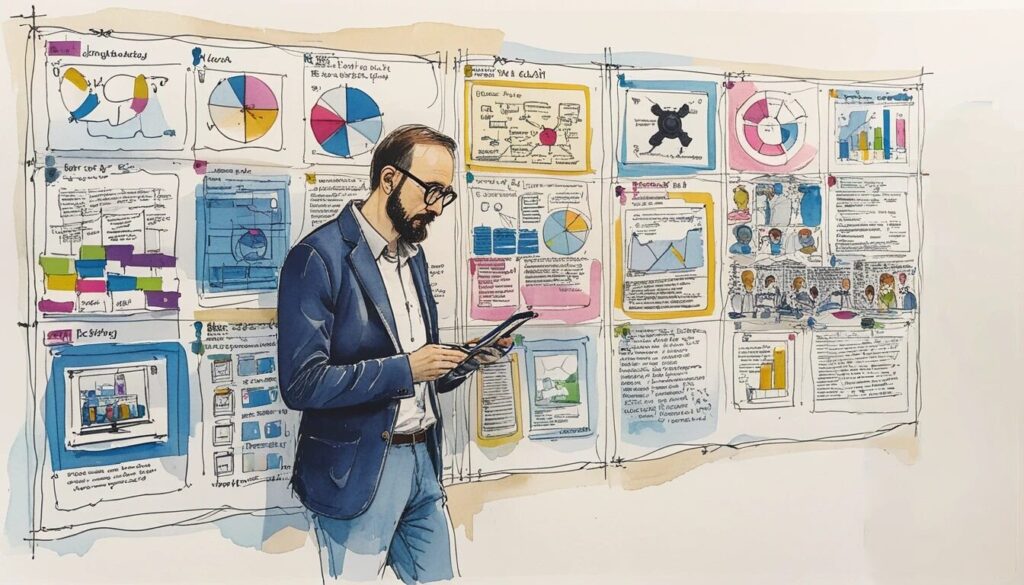The UX Research Playbook: Stop Guessing, Start Designing
Ever found yourself yelling at an app because the button you need is hidden under five unnecessary menus? Welcome to the wild world of user experience design, where good intentions don’t always lead to good results. The difference between frustration and seamless interaction? A deep understanding of UX research methods. If you’re a designer who thinks research is just an obstacle to creativity, think again. This guide will show you why skipping research is like baking a cake without checking if you have flour—it’s bound to go wrong.
Why UX Research Is Your Secret Weapon
- Eliminates guesswork – Data-driven decisions lead to better designs.
- Reduces costly errors – Fixing a design after launch is way more expensive.
- Improves user satisfaction – Happy users stick around; frustrated ones leave.
- Boosts business outcomes – Better UX leads to higher engagement and conversions.
Let’s be honest—your gut feeling isn’t a reliable design strategy. Without proper user research strategies, you’re essentially gambling with your product’s success. Great UX isn’t about making things look pretty; it’s about making them work for real people. And that requires research.
The Four Stages of UX Research (Yes, You Need All of Them)
- Discovery – Understanding user needs and pain points.
- Exploration – Ideating, prototyping, and testing early concepts.
- Testing – Validating designs through real-world user feedback.
- Iteration – Continuously refining based on new insights.
Skipping any of these steps is like assembling IKEA furniture without reading the instructions—sure, you might finish, but will it hold up? Let’s break down each phase so you can approach UX research like a pro.
Phase 1: Discovery – Dig Deep Before You Design
- User interviews – Uncover real needs, pain points, and behaviors.
- Field studies – Observe users in their natural environment.
- Stakeholder discussions – Align business goals with user needs.
- Competitive analysis – Learn from what works (and what doesn’t).
Discovery is about gathering real insights before making any design decisions. It’s the difference between designing for assumptions and designing for reality. Qualitative usability testing at this stage helps you avoid creating features no one actually wants.
Phase 2: Exploration – Where Ideas Take Shape
- Wireframing – Create low-fidelity sketches to map out ideas.
- Prototyping – Build interactive models to test functionality.
- Card sorting – Organize content for better navigation.
- User journey mapping – Visualize how users interact with your product.
Exploration is where creativity meets strategy. You take what you learned in discovery and start crafting potential solutions. This phase is about trial and error—because no one gets it right the first time.
Phase 3: Testing – Validate Before You Launch
- A/B testing – Compare two versions to see what performs better.
- Qualitative usability testing – Watch real users interact with your design.
- Accessibility audits – Ensure your design works for everyone.
- Performance testing – Measure speed and responsiveness.
Testing reveals flaws before they become disasters. Watching a user struggle with your design is painful, but it’s better than launching something broken. And trust us—users will find every flaw you didn’t.
Phase 4: Iteration – UX Research Never Really Ends
- Analytics tracking – Monitor user behavior over time.
- Feedback loops – Continuously collect user input.
- Bug tracking – Identify and fix recurring issues.
- Surveys – Directly ask users what they think.
UX research isn’t a one-and-done process. Even after launch, you need to keep listening, testing, and improving. Because what works today might frustrate users tomorrow.
Essential UX Research Methods Every Designer Should Know
- Usability testing – The foundation of great UX research.
- Eye-tracking studies – See where users focus their attention.
- Heatmaps – Identify patterns in user interaction.
- Contextual inquiry – Observe users in real-world scenarios.
Different projects require different research methods. The key is knowing which ones to use and when. A well-rounded approach leads to designs that actually work.
Final Thoughts: UX Research Isn’t Optional
Skipping UX research is like driving blindfolded—you might move forward, but you’re bound to crash. If you want to create designs that users love (instead of tolerate), research isn’t just helpful—it’s essential. The best user research strategies don’t just uncover problems; they prevent them in the first place.
So, the next time someone tells you research is a waste of time, remind them: guessing is way more expensive than knowing. Now, go create something that doesn’t make people rage-quit!
